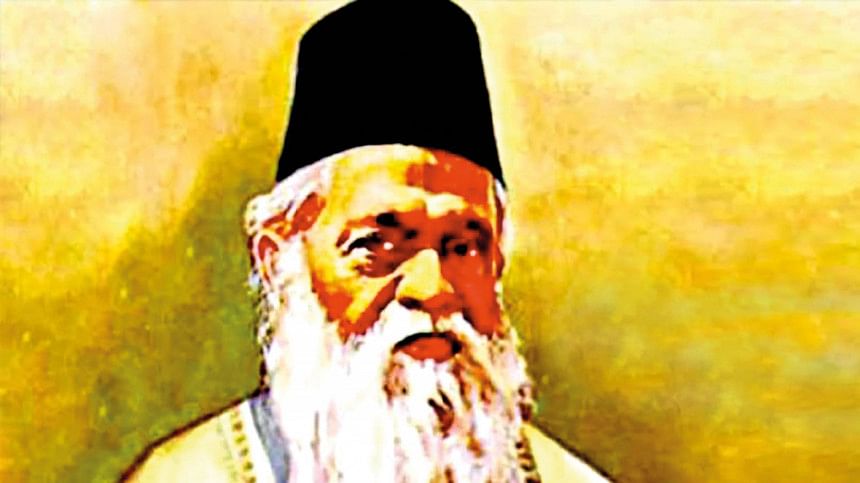Folk Literature

Despite the absence of city singers, musicians and dancers, there is no shortage of such artists in the rural areas. The demands have been significantly fulfilled by the chirpings of song-birds, murmuring of rivers, rustling of fallen leaves, and swaying of the verdant grains. Literature is scattered and found in every corner of the countryside, including the fields and country roads. However, we are unaware of the literary materials dispersed across the rustic expanses just as we are oblivious of the sea of air that surrounds us.
By compiling the Mymensingh Geetika, Dr Dinesh Chandra has proven how a treasure trove of literature is concealed in the countryside. Romain Rolland, a literature enthusiast from the far-west, is fascinated by the beauty of Madina Bibi in Mymensingh Geetika. There are many rustic poets like Mansur Bayati out there, away from the urban eyes. Who will introduce them to the literary world? Where are the volunteers for this work?
How wonderful the stories were that we used to hear from our village grandmas before falling asleep in the evening. These rural legends are no less mesmerizing than "Aladin's Magic Lamp" or "Alibaba and Forty Thieves" from the Arabian Nights. Unfortunately, these have disappeared into the abyss of oblivion due to the influence of modern education. The legends of "Shepherd's Cake Tree," "Sleeping Princess of Rakshaspuri," and "Ponkhiraj horse" are no longer told to children by modern, educated mothers. Instead, they are told the tales from the Arabian Nights or translated versions of Lamb's Tales from Shakespeare. Due to the distortion and loss of these myths, and the social document of our distant past, we are losing the connection with our illustrious history. If the folktales were collected properly, archaeological research would show that the stories of these grandparents have travelled outside the Indian subcontinent.
These legends, with little or no change, perhaps, are still being narrated by the village-women to their children or grandchildren in Europe. Who will collect and preserve our folktales and folklores from the inevitable destruction? The task of gathering the legends is carried out by the Folklore Society, a group of eminent academics in Europe and America. These are considered as important anthropological resources in the academic community. The Thakurmar Jhuli and Thakurdar Jhuli by Dakshinaranjan Mitra Majumdar are not sufficient to be described here. If all the folklores of Bangladesh were compiled together, it would take a number of volumes like the encyclopedia.
We know now that "Fi, Fie, Foh, fun" and the "smell of the blood of a British man" are the monsters' babbles equivalent to those of our 'hau, mau, khau, manusher gondho pau'! Where does the similarity come from? Does this imply that the English and the Bengali people formerly shared a common tent? In our daily conversations, we frequently quote proverbs like- 'Dath thakte dater morjada nei' (we never know the value of teeth until they are gone)', 'Dhori manch na chui pani' (to make sure of something without risking anything), 'Chacha apon pran bacha' (Every man is for himself) and so on. We also have "Khanar Bachan"- "Kala ruye na keto paat/Tate kapar, tate vaat" (Don't cut banana leaves after planting/There lies the food and the clothing). Dak O Khana contains moral lessons along with the history of our nation's secret past. For example, the proverb "Pirey bose perur khobor" (To get the news of the city staying indoor) reminds us of the time when Pandua was the capital of Bengal.
Nursery rhymes are another treasure of folk literature that children used to chant together like- Roud hcche, pani hocche/ Khekshiyalir biye hocche (The vixen gets married/In the sun-shower). These nursery rhymes are largely being overlooked. The Kapadi players used to recount the cadences like- Ek haat bolla baro haat singh/Ure jay bolla dha ting ting, which are also about to decline due to the influence of foreign games like football or cricket.
Let us then turn to folk-songs. The unique treasure of folk songs like Jari, Bhatiali, Rakhali, and Marfati are full of philosophical bents. These songs do not appeal to the elite society anymore as they are considered as the songs of illiterate peasants. Think of Monmajhi tor baitha nere/Ami are boite parlamna (O Death, I am exhausted/Take me away, I implore.) Can this song be compared with any of your modern songs?
So far, I have discussed the ancient resources of our rural life which can significantly enrich the literary treasury. Bengali literature nowadays refers to urban literature, or civic literature, chewing and munching on subjects like kings and queens, Babu and Bibi, vehicles, electric lights, movie theatres, and blowing tea cups. Who cares about the tales of rural peasants, fishermen, and labourers? Our poet laureate Rabindranath Tagore once sang 'Ebar firau more' (Take me to the root), but went back to the civic literature. For the city dwellers, the village is mostly rotten, disgusting and repulsive, while for a few it is an exotic realm of delight. It is high time to build a rural literary terrain alongside the realm of urban literature. This proletariat literature is progressively gaining popularity in Europe and America, But where are the local poets, writers, and novelists to portray rural canvas in an engaging way?
Bengal has a rich tradition of folk literature which is on the verge of extinction. In my opinion, it is high time for the native sons to look back and learn to nurture the tradition. Otherwise, all our preparations will go in vain.
This essay is a revised version of an address delivered by Dr Muhammad Shahidullah as the President of 1tth session of 'East Mymensingh Sahitya Sammilani' in 1936.
Abdullah-Al-Musayeb is an academic, researcher and translator.

 For all latest news, follow The Daily Star's Google News channel.
For all latest news, follow The Daily Star's Google News channel. 



Comments